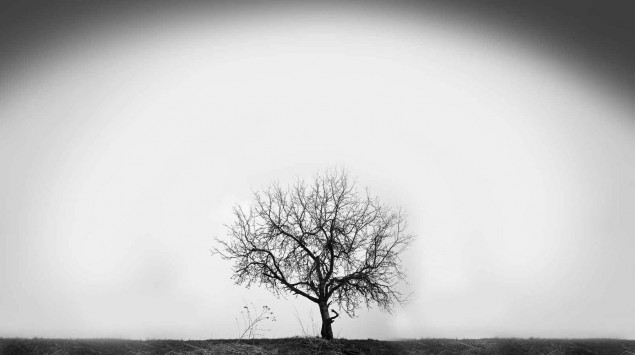Fighting for Sandy: A Woman’s Struggle to Give Her Sister a Jewish Burial
On Shabbat Chanukah of 2006, my older sister Sandy passed away. Raised a secular Jew, she had arranged to have her body cremated and gave her friend Brian, a Buddhist, power of attorney. She wished to have her ashes and those of her daughter, my sweet niece Ola who had died in 2000 at the age of twenty-six, cast at sea. At the time, I did not know that cremation among unaffiliated American Jews had become a veritable epidemic.
Prior to her death, in an attempt to treat her cancer holistically, my sister went on a cruise, hoping the calming sea would alter her body chemistry. Her cancer persisted. Some time before her death, she told Brian that when she passed on, he should deliver her ashes to the captain of the ship she had sailed on.
My sister did not include her family in her final arrangements, so while I was able to influence my parents to change their will and be buried in accordance with Jewish law—they too had wanted cremation—I did not have that opportunity with Sandy. I had hoped for an opening, but that door slammed shut when she died alone in her San Francisco home a few days after her doctor told her she had three months to live.
“Kol Yisrael arevim ze lazeh, All Jews are responsible for one another.” As a ba’alat teshuvah, I felt a strong responsibility to have my sister buried in accordance with Jewish law. We are taught that the soul of the niftar or nifteret stays with the body and suffers greatly when the body is desecrated. I was determined to leave no stone unturned in an all-out, last-ditch effort to prevent this. Although cremation had been my sister’s final wish, I knew it wasn’t her final wish anymore.
Throughout this painful saga, I was assisted by many wonderful people who gave me halachic and legal guidance. I consulted with various authorities on Jewish burial and cremation, including Rabbi Elchonon Zohn, president of the National Association of Chevra Kadisha (NASCK), and lawyers in the legal division of Agudath Israel of America. Friends and family prayed on behalf of my sister’s neshamah. When hearing of my plight, fellow Jews—people I didn’t even know—in Israel and the US recited Tehillim, learned mishnayot and gave tzedakah in a bid to give Sarah bat Mendel Yitzchak a halachic burial. Irrespective of the outcome, I knew the Tehillim and mishnayot would serve as a tremendous merit for her.
During the flight from New York, where I live, to San Francisco, I cried, grieved and worried. When I arrived at the facility where her body was being held, the director informed me that because Sandy had prepaid for the cremation, it would be difficult to stop it.
I wasn’t permitted to stay with my sister’s body. All I could do to provide “shemirah” for her was sit in a room down the hall surrounded by urns of every style: engraved, simple, brass, copper, cedar, marble, mother-of-pearl, large, small and classic.
Jewish tradition teaches that the soul lingers near the body until burial and for some time afterward. I tried to offer comfort to my sister’s neshamah. I spoke to her and asked Hashem to use all my prayers and mitzvot as an aliyah for her neshamah. Amidst the urns, I recited Tehillim and davened, staying close to her for three days, from morning until evening.
The first day after her death, Brian came to the facility with Grace, my sister’s oldest and closest friend. He made it clear that under no circumstance would he interfere with Sandy’s final wishes, and as a Buddhist, cremation was consistent with his beliefs.
However, because a close relative objected to the cremation, the process came to a standstill while the director of the facility tried to figure out how to proceed. I began calling halachic authorities around the country. How could I stop the cremation? What is the law? How could I make the Torah’s wisdom compelling to a Buddhist? I called and prayed, prayed and called some more. A rabbi in Florida advised me that next of kin could trump power of attorney. However, a lawyer from Agudath Israel informed me that it would be an “uphill battle that you may well lose.” At the same time, the facility consulted with its own administrative hierarchy.
I did not have the language to explain why cremation was so appalling to traditional Jews. I certainly tried, but I felt that my explanations kept falling flat, as if I were parroting other people’s words. In the process of trying to convince Brian and Grace, I began to grasp the fundamental difference between the Torah and the non-Torah approach to death. The latter approach views the body as a shell with no intrinsic value. Burn it if you wish; it has become irrelevant, litter discarded by the soul. The Torah, on the other hand, teaches us that a person is holy and, by extension, the body is as well. We therefore respect the body after death, providing it with a dignified burial instead of treating it like trash.
At the time, I did not know that cremation among unaffiliated American Jews had become a veritable epidemic.
I met Brian for breakfast at a kosher restaurant and tried to convey the critical importance of a Jewish burial. I grappled to find the right words. Brian said he didn’t believe he could change my sister’s wishes. Before we parted, I knew that I had, at the very least, touched him in some way and made a Kiddush Hashem.
On the third day, the director informed me that my bid to stop the cremation had failed and that they would proceed. Unable to reach my rav, whom I had been peppering with dozens of she’eilot, I deliberated whether I should be melaveh (accompany) my sister as she was being transported to the crematorium. The director objected to my walking alongside the van transporting the body. I had hoped she would grant me this last act of kindness if I explained our “custom.” “No,” she told me. She wasn’t going to tell me when my sister’s body was scheduled to leave the facility. I managed to find out anyway, and as the van passed by, I jumped out of my car and escorted my sister’s body.
A day or two later I returned to New York, but continued to try and prevent the inevitable with more calls and e-mails. (Even after a body is delivered to the crematorium, it is not cremated right away.) A few weeks later, I learned that my sister’s body had been cremated. I received a pesak that I was not to sit shivah. Sandy was gone. There was no formal mourning period, which was extremely difficult and confusing for me. There was no grave to visit. But there were mishnayot and tzedakah and Kaddish. At my sister’s sheloshim (memorial gathering), I asked the women I had invited, all of whom had nonobservant relatives and friends, if they knew someone who had chosen cremation. Only three out of the twenty-five present replied in the negative. In the days and weeks that followed, I asked numerous Jewish but unaffiliated friends and relatives about the subject. Everyone, without exception, had either decided on or was contemplating cremation.
The Jewish people’s slide into assimilation has become a soup-to-nuts kind of spiritual self-destruction that begins with the shunning of the brit milah, continues with rampant intermarriage and ends with cremation. People choose cremation for a variety of different reasons. In the absence of any compelling reason to bury rather than cremate, cremation seems like a reasonable option for the ever-growing number of Jews who are far removed from Torah.
We live in a World of Doing, and those who have transitioned to the World of Souls can no longer act, grow or change—that is the work of this world. The dead rely on the living to elevate them through studying Torah or sponsoring Torah study, reciting Kaddish and mishnayot on a yahrtzeit, taking on a mitzvah, saying Tehillim in their merit and giving tzedakah. After Sandy’s death, my dear friend Ella Adler began to dedicate the songs sung at her third meal on Shabbat, Seudah Shelishit, as a merit for the souls of my sister and my niece. She calls them Sarah’s Melodies (my sister’s Hebrew name was Sarah).
Three years after my sister’s death, I lost both my parents a few months apart. I was able to bring their bodies from Reno, Nevada to Long Island, New York where they were brought to kever Yisrael (a traditional Jewish burial) and buried with love and dignity. Now Sarah’s Melodies includes my parents as well.
I do everything I can to elevate the neshamot of my parents, my sister and my niece. May this article serve as an aliyah for the neshamot of Menachem Mendel Yitzchak ben Aaron, Yael bat Zev, Sarah bat Menachem Mendel Yitzchak and Ola bat Avraham, of blessed memory.
Jeanie Silver is a project development consultant for nonprofit and for-profit organizations and lives in Brooklyn, New York. She is a writer and speaker who is dedicated to working with at-risk youth.


